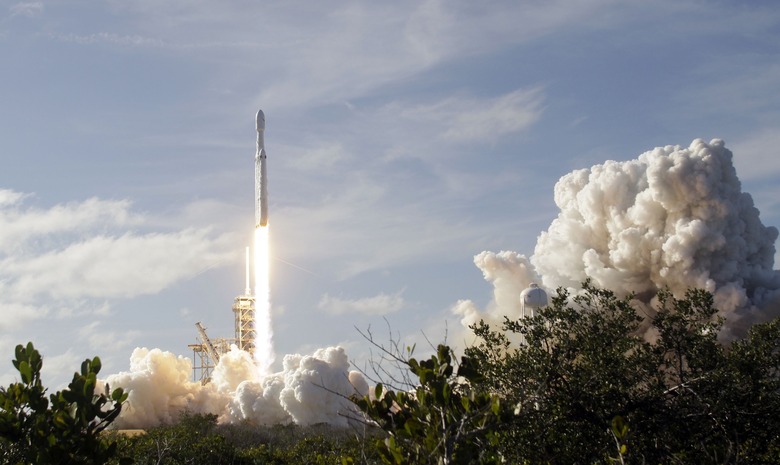SpaceX's Next Starlink Mission Keeps Getting Tripped Up
- SpaceX was forced to again delay the launch of its next Starlink mission as well as the deployment of a satellite for paying customer BlackSky
- The launch was delayed three times due to various issues including weather and some vague "checkouts" that need to be performed on the rocket.
- No new launch date has been announced after the third launch scrub.
SpaceX's launch woes continued this past weekend with yet another delay of the company's mission to launch a new satellite for a company called BlackSky along with a fresh batch of its own Starlink communications satellites. Whether it's weather concerns or issues with the spacecraft itself, SpaceX just can't seem to catch a break.
Last week Wednesday was the originally scheduled launch date for the Falcon 9 carrying the suite of satellites. That, unfortunately, had to be pushed back to Friday due to weather woes, but Friday's skies were no more favorable than they were two days prior. The third scheduled launch date, Saturday the 11th, looked a bit more favorable, but was scrubbed due to what SpaceX describes as "checkouts."
Even more unfortunate, SpaceX doesn't appear to have a timeline for when its mission will eventually launch. After a trio of launch scrubs, the company has to find a clear spot on its schedule after it works out any kinks with the spacecraft itself. In the meantime, BlackSky and SpaceX's own Starlink program will have to wait for their new hardware to finally take flight.
"Standing down from today's launch of the tenth Starlink mission to allow more time for checkouts; team is working to identify the next launch opportunity. Will announce a new target date once confirmed with the Range," SpaceX explains in a brief statement via Twitter.
Standing down from today's launch of the tenth Starlink mission to allow more time for checkouts; team is working to identify the next launch opportunity. Will announce a new target date once confirmed with the Range
— SpaceX (@SpaceX) July 11, 2020
SpaceX's Starlink program is only just starting to get on its feet. The company has a beta signup page for those who are interested in testing out the Starlink data service once it's ready, but that may not be for several months. In the meantime, the company continues to bolster the satellite network with launches that carry dozens of the pintsized satellites into space.
The Starlink satellite horde has already proven to be a nightmare for astronomers. The spacecraft, while tiny, are easily visible during sky surveys from Earth due to their habit of reflecting sunlight. SpaceX has tested out ways of mitigating their visibility, and this new batch waiting to be launched includes what are described as deployable shades that can block much of the reflection and make the satellites much less visible to telescopes.
We won't know exactly how much better they are until astronomers have a chance to weigh in, but hopefully, SpaceX can make its new globe-spanning communications network compatible with scientific endeavors to explore the cosmos.
